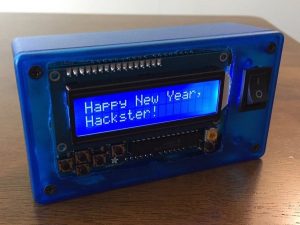Summary of Make An Old-School Arduino-Based Two-Way Pager
This Arduino-based pager by Mike Schaus enables sending and receiving real SMS messages using a SIM card and phone number. Powered by an Arduino UNO and GSM shield, it features an Adafruit 16×2 LCD display for interaction. The device, housed in a Hammond project box, can be powered via USB or a 9V battery. Designed for simplicity and safety, it suits children as a phone alternative or serves as an SOS alert for outdoor workers. The I2C LCD shield uses only two Arduino pins, allowing extra space for future enhancements.
Parts used in the Arduino-based Pager:
- Arduino UNO
- Hologram SIM Card with Device Management
- Arduino GSM Shield V2
- Adafruit LCD Shield Kit with 16×2 Character Display
- Hammond Project Box 4.7 x 2.6 x 1.4 Translucent Blue
- 9V battery (optional power source)
This Arduino-based pager by Mike Schaus will allow you to send and receive real SMS text messages. This messaging device has its own SIM card and phone number.
In order to build this project you need the following parts:
- 1* Arduino UNO
- 1*Hologram SIM Card w/Device Management
- 1*Arduino GSM shield V2
- 1*Adafruit LCD Shield Kit w/ 16×2 Character Display
- 1*Hammond Project Box 4.7 x 2.6 x 1.4 Translucent Blue
And you will need to use this software to run the project: Hologram Data Router.
This project was made possible as part of Hologram’s Hacker-In-Residence program, The Hologram Global SIM Card allows you to connect you IoT device everywhere. Paired with a powerful device management platform and API. It provides a cellular data service that works with any device that accepts a SIM card. In addition it is totally inexpensive.
GSM shield, the Hologram things, and Arduino stacked on top of each other made a good combination to build such a project. For powering the project, Mike had used a 9V battery as an option, and still, powering from USB is possible.
Mike had designed this project so it could be used by children instead of a real cell phone, or it could be used as an “SOS” button for someone working alone outdoors or even exercising.
Check this video to know how this project works:
The amazing thing about Adafruit LCD shield that it only uses 2 pins of Arduino since it works over the I2C bus, which results with many places left for future features.
This is the schematics of the project: It is super easy, the wires mean putting the pieces on top of each other.
Read more: Make An Old-School Arduino-Based Two-Way Pager

